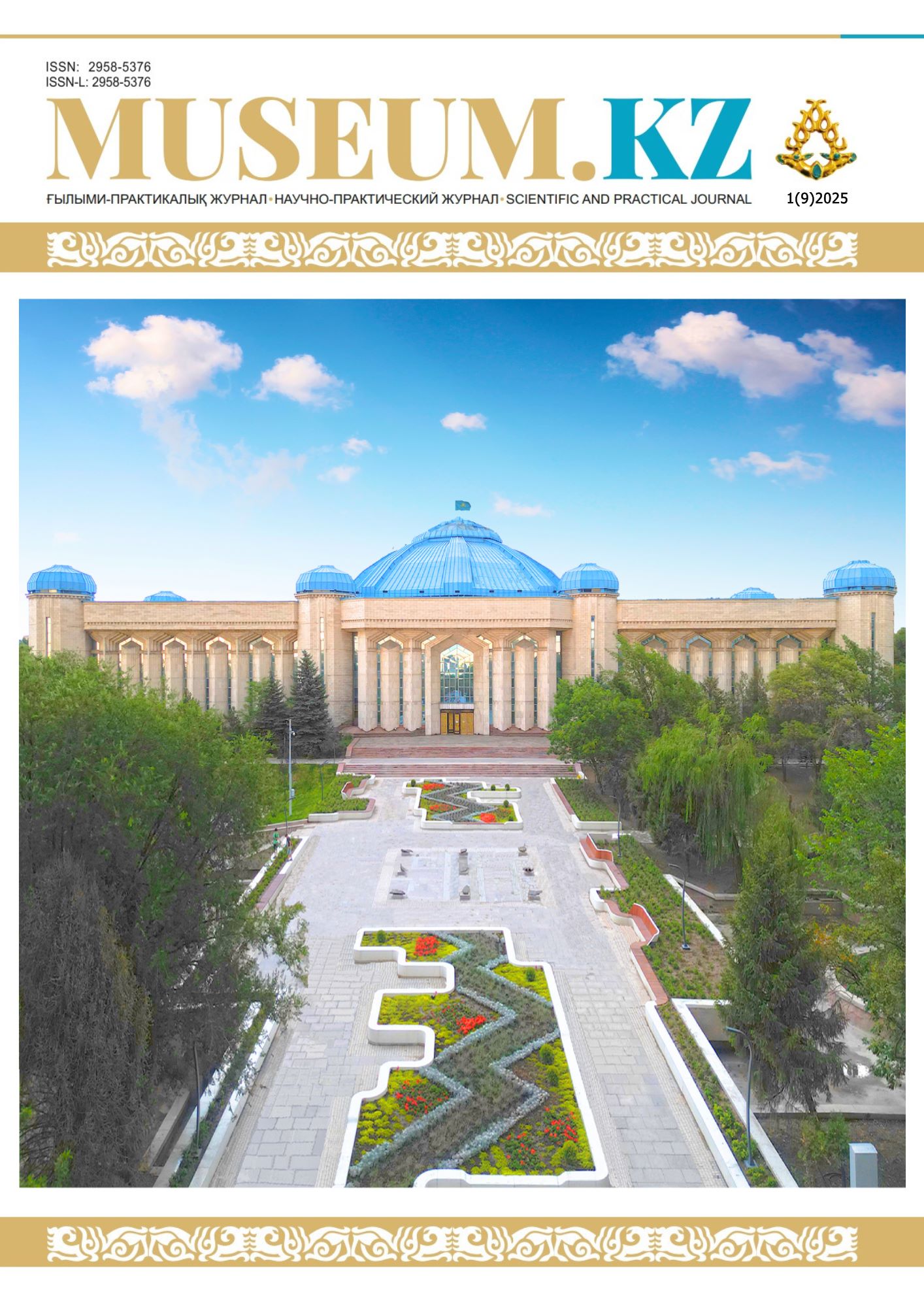MEDIEVAL ARCHITECTURAL MONUMENT OF CENTRAL KAZAKHSTAN
DOI:
https://doi.org/10.59103/muzkz.2025.09.07Keywords:
architecture, culture, monument, mazar, dome, entrance opening, arch, flagstone, survey work, mausoleum, foundation, slab, pre-Islamic period, restoration, ancient era, Kazakh yurts, square, cone-shapedAbstract
Abstract. The construction of architectural monuments in Central Kazakhstan was based on local construction traditions, on the folk experience accumulated by many generations of masters of previous periods.
The earliest types of mausoleums in this region include the Dombaul mazar, located on the left bank of the Kara-Kengir River in the Ulytau district of the Karaganda region. In shape, Dombaul resembles a yurt and is made of grayish-pink flagstone sandstone. This mazar corresponds to the low level of development of construction technology of that time due to the lack of sufficient practice in the construction of monumental buildings, but still corresponds to the needs and demands of ancient society, it’s religious beliefs.
The time of condemnation and the affiliation of the Dombaul mazar are not exactly known. It can be assumed that it arose in the VIII-X centuries - during the penetration of Islam. Folk legend attributes it to the court musician of Genghis Khan, which, of course, does not correspond to the time of the construction of the mazar. Dombaul is known to us as one of the earliest monumental stone structures in Kazakhstan and is valuable for studying the history of the development of folk architecture as the first harbinger of the amazingly beautiful and complete medieval monuments of Kazakhstan.







